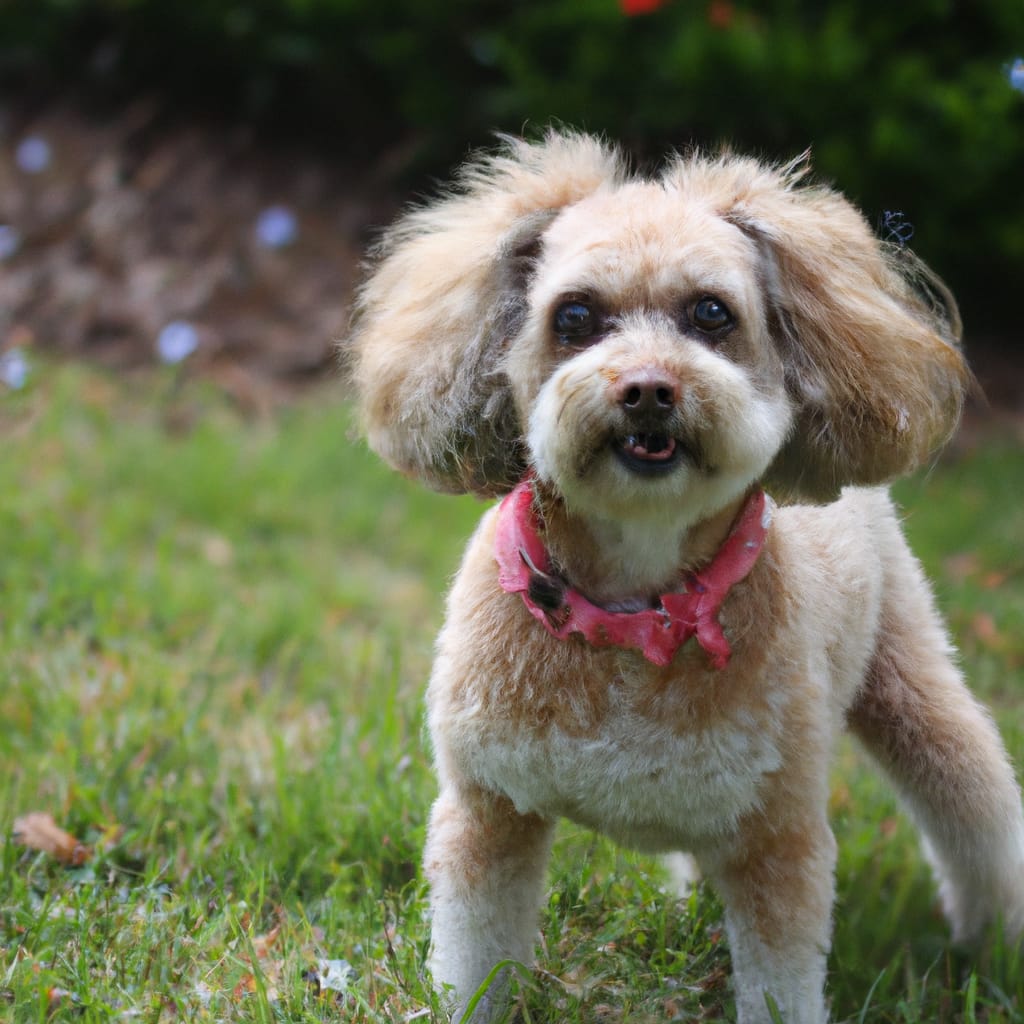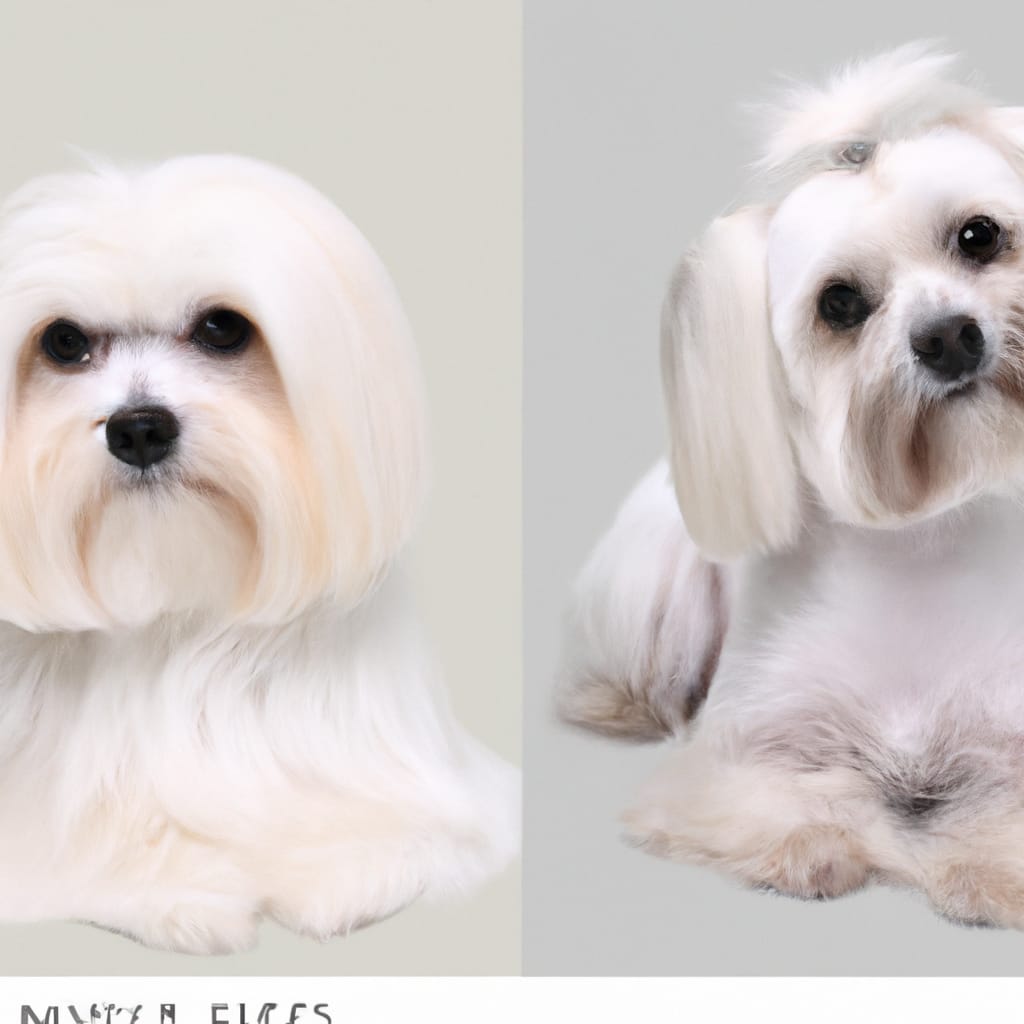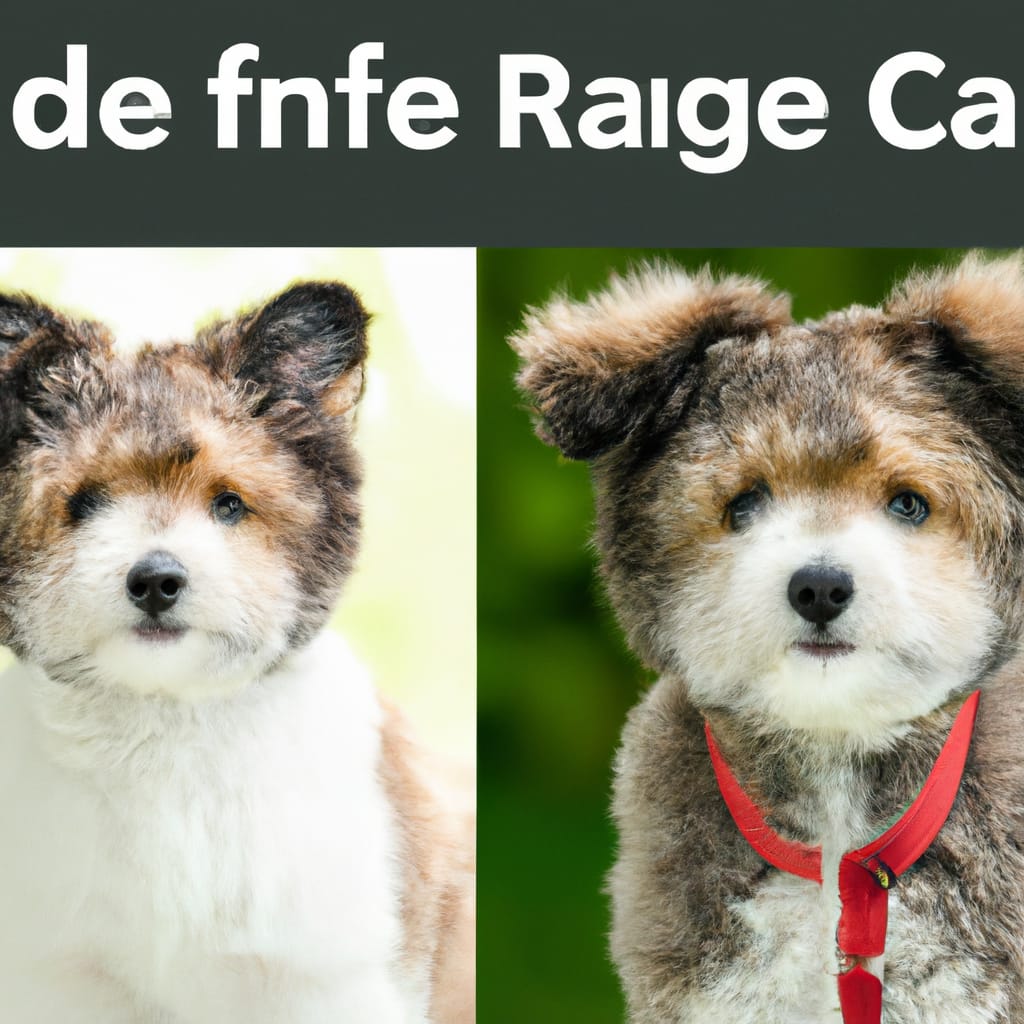Belgian Malinois Vs German Shepherd: What Are The Differences?
Are you considering getting a new furry friend but can’t decide between a Belgian Malinois and a German Shepherd? Look no further, because in this article we will explore the key differences between these two popular dog breeds. While both breeds are intelligent, loyal, and versatile, there are some distinct characteristics that set them apart. From physical appearance to temperament and exercise needs, we will delve into the unique qualities of each breed, helping you make an informed decision about which one is the perfect fit for you. So, let’s dive in and discover the Belgian Malinois and German Shepherd breeds together!
Appearance
Size
Both the Belgian Malinois and German Shepherd are large dog breeds. The Belgian Malinois typically stands between 22 to 26 inches tall at the shoulder and weighs between 40 to 80 pounds. On the other hand, German Shepherds are slightly larger, with an average height of 22 to 26 inches and a weight range of 50 to 90 pounds. Despite these slight differences in size, both breeds possess a strong and athletic build.
Color and Coat
When it comes to color and coat, there are a few distinctions between the Belgian Malinois and German Shepherd. Belgian Malinois have a short, dense coat that comes in various colors such as fawn, mahogany, and red. They often have a distinct black mask on their face. In contrast, German Shepherds have a medium-length, thick double coat that is typically tan with a black saddle. However, German Shepherds can also have solid black or sable coats.
Facial Features
The Belgian Malinois and German Shepherd both display expressive and intelligent facial features. Belgian Malinois have a pointed muzzle and almond-shaped eyes that radiate a sense of alertness. Their ears are naturally erect and triangular in shape, contributing to their keen and attentive appearance. German Shepherds also have a distinct muzzle, but their eyes are more angulated. Their ears are larger and stand upright as well, giving them a strong and confident appearance.
Overall Appearance
In terms of overall appearance, both breeds are undeniably striking. The Belgian Malinois exudes an aura of elegance and athleticism, with a well-balanced and compact body. They possess a sleek and muscular physique that reflects their natural agility and endurance. German Shepherds, on the other hand, have a confident and noble appearance. Their body structure is well proportioned, displaying strength and grace. Both breeds leave a lasting impression with their remarkable physical attributes.
Temperament
Trainability
Belgian Malinois and German Shepherds are both highly trainable breeds. Their intelligence and eagerness to please their owners make them quick learners. However, it’s important to note that the Belgian Malinois may require a more experienced trainer due to their high-drive nature. These dogs excel in various dog sports and working roles, such as search and rescue, police work, and competitive obedience.
Energy Levels
Both breeds have impressive energy levels and require regular exercise to maintain their overall well-being. Belgian Malinois are known for their boundless energy and drive, making them well-suited for active individuals or families who can provide them with plenty of physical exercise and mental stimulation. German Shepherds also have high energy levels and thrive in environments where they can engage in vigorous activities such as running, playing fetch, or participating in agility training.
Aggression
Aggression is not a trait typically associated with either the Belgian Malinois or the German Shepherd. However, it’s important to remember that every individual dog is unique and their upbringing and training play a significant role in shaping their temperament. Proper socialization, training, and responsible ownership are crucial in ensuring that both breeds develop into friendly and well-behaved companions.
Sociability
Belgian Malinois and German Shepherds can both exhibit varying degrees of sociability. Early socialization is important for both breeds to ensure they develop into well-adjusted and friendly dogs. While Belgian Malinois tend to form strong bonds with their family members and can be reserved with strangers, German Shepherds are generally more outgoing and accepting of new people. With proper training and socialization, both breeds can coexist peacefully with other animals and be welcoming to visitors.
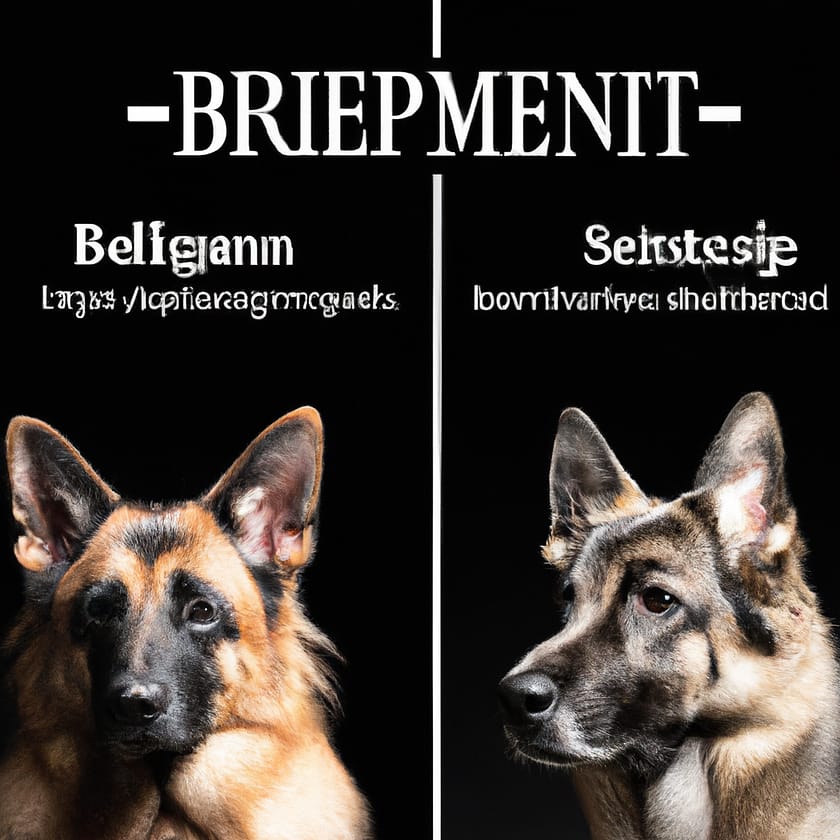
Exercise and Activity Needs
Exercise Requirements
The Belgian Malinois and German Shepherd have high exercise requirements and need daily physical activity to prevent boredom and maintain their physical and mental well-being. Belgian Malinois will benefit from several vigorous exercise sessions, such as long walks, runs, and agility training. German Shepherds also require ample exercise, including activities like playing fetch, hiking, or participating in advanced obedience training.
Mental Stimulation
In addition to physical exercise, mental stimulation is crucial for both breeds. Belgian Malinois and German Shepherds are highly intelligent and thrive when provided with challenging tasks and problem-solving opportunities. Engaging them in interactive games, puzzle toys, and obedience training can help satisfy their mental stimulation needs.
Work Opportunities
Due to their intelligence, drive, and trainability, Belgian Malinois and German Shepherds excel in various working roles. Belgian Malinois are often employed in military and law enforcement agencies for tasks such as search and rescue, detection, and apprehension work. German Shepherds are widely recognized as exceptional police and military dogs, as well as service animals for tasks such as guiding the visually impaired or assisting individuals with mobility challenges.
Ideal Living Environment
Both the Belgian Malinois and German Shepherd thrive in environments that can provide them with ample exercise and mental stimulation. A spacious yard or access to open spaces would be beneficial for them to burn off energy. These breeds are best suited for active individuals or families who can devote time and effort to their physical and mental needs. Apartment living is not ideal for either breed due to their size and exercise requirements.
Purpose and Working Roles
Belgian Malinois
The Belgian Malinois is a versatile working breed that excels in a range of tasks. They are well-suited for roles such as police and military work, search and rescue operations, detection work (including narcotics and explosives detection), and competitive obedience. Their speed, agility, and keen sense of smell make them well-equipped for these demanding roles.
German Shepherd
German Shepherds are renowned for their versatility and have been used in various working roles throughout history. They are commonly employed in police and military work, search and rescue missions, tracking, and as therapy and service dogs. German Shepherds’ intelligence, loyalty, and protective instincts make them excellent candidates for these important roles.
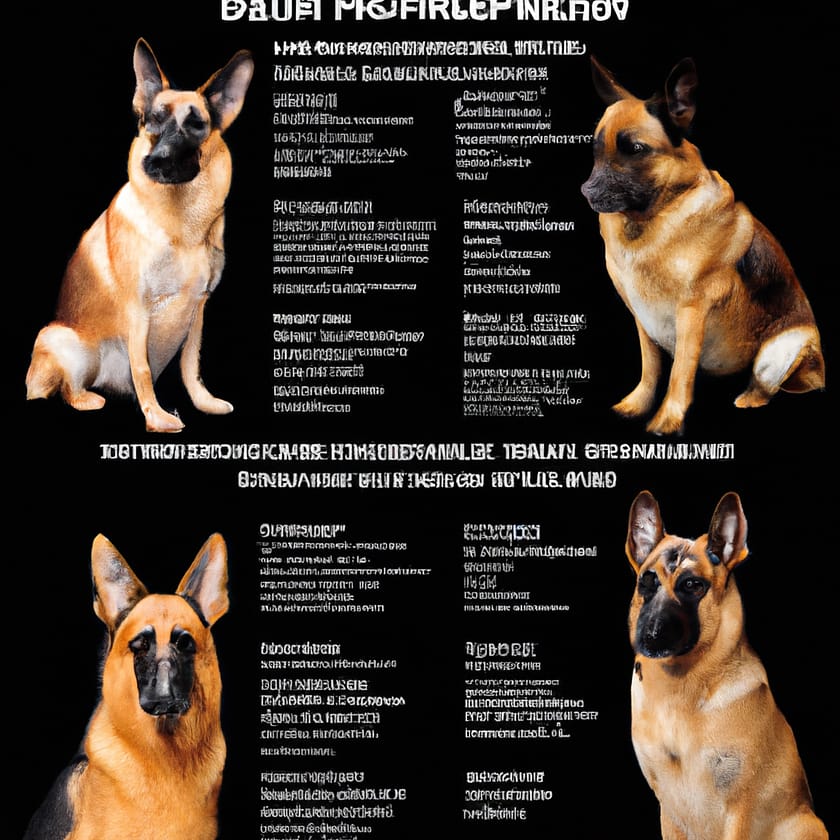
Health and Lifespan
Common Health Issues
Both Belgian Malinois and German Shepherds are generally healthy breeds. However, like all dog breeds, they can be prone to certain health issues. Some common health concerns in Belgian Malinois include hip dysplasia, elbow dysplasia, and progressive retinal atrophy. German Shepherds may also be susceptible to hip and elbow dysplasia, as well as degenerative myelopathy and bloat.
Lifespan
Belgian Malinois have an average lifespan of around 12 to 14 years. German Shepherds typically live between 10 to 12 years. Providing proper veterinary care, a balanced diet, regular exercise, and a loving environment can help maximize the lifespan of both breeds.
Care and Maintenance
Both Belgian Malinois and German Shepherds require regular grooming to maintain a healthy coat. Brushing their coats weekly helps remove loose hair and prevent matting. Regular dental care, such as brushing their teeth and providing dental treats, is important for maintaining good oral hygiene. Additionally, routine veterinary check-ups, vaccinations, and preventative treatments for fleas, ticks, and parasites are essential for their overall well-being.
Training and Obedience
Trainability
Both the Belgian Malinois and German Shepherd are highly trainable breeds. They possess great intelligence, focus, and a strong desire to please their owners. Consistent and positive reinforcement-based training methods work best with these breeds, as they are eager to learn and respond well to rewards and praise.
Working Capability
Belgian Malinois and German Shepherds have proven their working capabilities time and again. They are born with the drive and instincts to excel in various working roles. Their intelligence, athleticism, and willingness to work make them well-suited for tasks that require problem-solving, discipline, and physical performance.
Obedience Levels
Belgian Malinois and German Shepherds are both known for their high levels of obedience. With proper training, these breeds can be taught a wide range of commands and will eagerly demonstrate their understanding. Obedience training helps create a strong bond between owners and their dogs and ensures that these breeds can be obedient and well-behaved in various situations.
Command Response
Belgian Malinois and German Shepherds are quick to respond to commands and have a strong desire to work together with their owners. These breeds have been selected and bred for their ability to be responsive and attentive to human instruction. Proper training and consistent reinforcement are key to maintaining a positive and reliable command response.
Suitability as a Family Pet
Temperament
Both Belgian Malinois and German Shepherds can make excellent family pets with proper socialization and training. Belgian Malinois are often intuitive and attentive to their family’s needs, while German Shepherds are generally known for their loyalty and protective instincts. However, it’s crucial to consider the needs of both these breeds and ensure they receive the exercise, mental stimulation, and attention they require to thrive in a family environment.
Socialization
Early and ongoing socialization is essential for both breeds to ensure they are comfortable and well-behaved in various social settings. Introducing them to different people, animals, and environments from a young age helps to build their confidence and prevents the development of fear or aggression towards unfamiliar situations.
Compatibility with Children
Both Belgian Malinois and German Shepherds can be compatible with children when properly socialized and trained. However, it’s important to supervise interactions between young children and dogs to prevent any accidental injuries. Teaching children how to properly interact with dogs and establishing boundaries for both the child and the dog is crucial to create a harmonious and safe family dynamic.
Guarding and Protective Instincts
Belgian Malinois and German Shepherds have natural guarding and protective instincts. While these qualities can make them excellent protectors for their families, it’s important to provide proper training and socialization to ensure that these instincts are channeled appropriately. Responsible ownership and training can help prevent territorial aggression and ensure a well-rounded family pet.
Price and Availability
Breed Availability
Both Belgian Malinois and German Shepherds are popular breeds and can be found through reputable breeders or shelters. It’s crucial to do thorough research and find a responsible breeder who prioritizes the health and temperament of their dogs. Additionally, adopting from shelters and rescue organizations is a wonderful way to provide a loving home to a dog in need.
Price Range
The price of a Belgian Malinois or German Shepherd can vary depending on various factors such as the breeder’s reputation, bloodline, and the dog’s pedigree. Generally, you can expect to pay anywhere from $800 to $2500 for a Belgian Malinois puppy, while German Shepherd puppies typically range from $800 to $1500. It’s important to remember that the initial cost is just the beginning, and ongoing expenses such as food, grooming, healthcare, and training should also be taken into account.
Cost of Care
The cost of caring for a Belgian Malinois or German Shepherd includes expenses such as high-quality dog food, routine veterinary care, grooming supplies, training and obedience classes, and preventative medications. Additionally, providing mental stimulation and exercise opportunities may entail additional costs such as puzzle toys, agility equipment, and daycare or dog walking services when needed. It’s crucial to budget for these expenses to ensure that both breeds receive the care and attention they require.
History and Origin
Belgian Malinois
The Belgian Malinois is one of four Belgian Shepherd dog breeds and originated in Belgium. They were initially bred for herding livestock but quickly gained popularity for their intelligence, versatility, and working abilities. Today, Belgian Malinois are widely recognized for their exceptional skills in areas such as police work, search and rescue, and competitive dog sports.
German Shepherd
The German Shepherd breed originated in Germany and was initially bred as a herding dog. They gained popularity due to their exceptional intelligence, loyalty, and versatility. German Shepherds have been utilized in various working roles throughout history, including police and military work, search and rescue, and as service and therapy dogs. Their strong work ethic and versatile nature have made them one of the most beloved and admired dog breeds worldwide.
Conclusion
In conclusion, both the Belgian Malinois and German Shepherd are exceptional breeds with unique qualities. Their differences in appearance, temperament, and working roles should be carefully considered when deciding which breed is the best fit for your lifestyle. Both breeds require devoted and responsible ownership, as well as plenty of exercise, mental stimulation, and training. With the right environment and care, either breed can become a devoted and loving companion, ready to take on various roles and provide endless joy and companionship to their owners.











